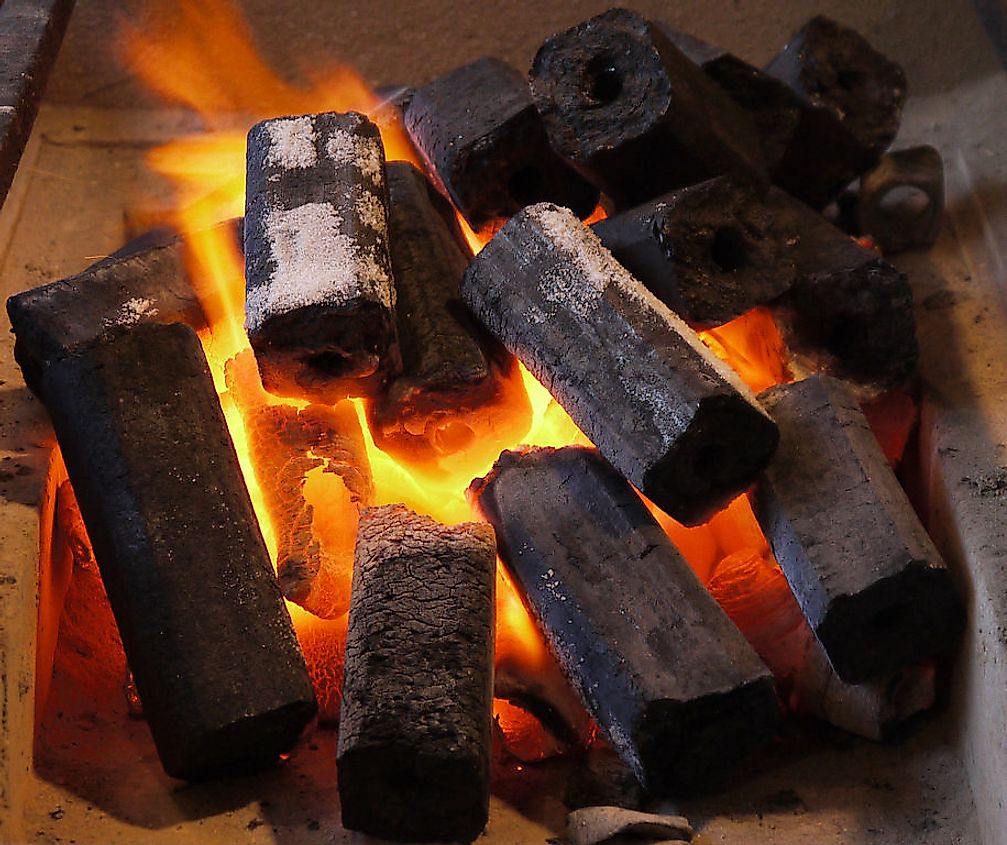Top 10 Wood Charcoal Producing Countries

Charcoal is an important natural resource which has been used throughout history for many purposes, including art, medicine, and chemistry. However, its primary use has been as a source of fuel. Although charcoal can be made from a variety of animal and vegetable products, the most common commercially available charcoal is made from wood.
Wood charcoal is primarily made up of carbon, called char, with some ash residue from the original wood remaining. Wood charcoal is made by heating wood in a low-oxygen environment, over the course of several days. This process dehydrates the wood and burns off roughly 75% of the original wood volume, mostly volatile compounds such as water, methane, hydrogen, and tar. The resulting substance consists of lumps (bricks) and powder. Carbonization temperature determines the appearance, texture and fire point of the charcoal. Some byproducts from the charcoal-making process also have useful commercial applications, including sawdust, wood spirit, pyroligneous acid, and wood tar.
Highest Producers of Wood Charcoal
Brazil produces 11% of the world's wood charcoal, the world's largest single contributing country by far. Much of Brazil's charcoal is used for the production of pig iron, one of the country's primary exports. India and China each produce 4%, and a token amount is contributed by many other countries around the world. The remaining 63% of global wood charcoal production is based in Africa, particularly in countries such as Nigeria, Ethiopia, the Democratic Republic of Congo, Mozambique, Tanzania, Ghana, and Egypt. Seven of the top ten charcoal-producing countries are African.
Between 2004 and 2009, global wood charcoal production increased by 9%. This is due in large part to the increase in wood charcoal use and production in developing African countries. Approximately 30% of the wood harvested for fuel in Africa is used for charcoal production.
A Boon to Developing Countries
Why is wood charcoal use on the rise in developing countries? Before urbanization, the majority of citizens resided in isolated, rural areas. Wood was the most inexpensive and readily-available fuel source. However, wood is more difficult to ignite, awkward to carry and collect, dangerous for children (as a source of splinters or puncture wounds), smoky and messy. As increasing urbanization has made coal more affordable and readily available, it has become a preferable fuel alternative that lacks or significantly reduces many of the unpleasant negative effects found in fuel wood. Wood charcoal is also much cheaper than modern fuels such as liquified petroleum gas (LPG) or kerosene. Therefore, in countries which are just beginning to urbanize, it is extremely desirable as a fuel source. Additionally, increased charcoal production has created many new jobs and a significant financial boost in many African countries with developing economies. This helps developing countries conserve resources, reduce migration from rural areas, and improve the average income of its citizens.
Increased wood charcoal production and consumption could have a significant negative effect on the environment. For countries with high consumption but weak supply sources, there is a danger of excessive deforestation of that country's existing tree populations. A developing country's transition from fuelwood to charcoal could have devastating ecological consequences if there are no limits put on production and use. However, charcoal stoves are far more efficient than wood stoves, and with adequate supervision, management and support, it is possible for wood charcoal to be a sustainable resource.
Top 10 Wood Charcoal Producing Countries
| Rank | Country | Percentage Share of Wood Charcoal Production |
|---|---|---|
| 1 | Brazil | 11 |
| 2 | Nigeria | 8 |
| 3 | Ethiopia | 8 |
| 4 | Democratic Republic of Congo | 4 |
| 5 | Mozambique | 4 |
| 6 | India | 4 |
| 7 | China | 4 |
| 8 | Tanzania | 3 |
| 9 | Ghana | 3 |
| 10 | Egypt | 3 |











